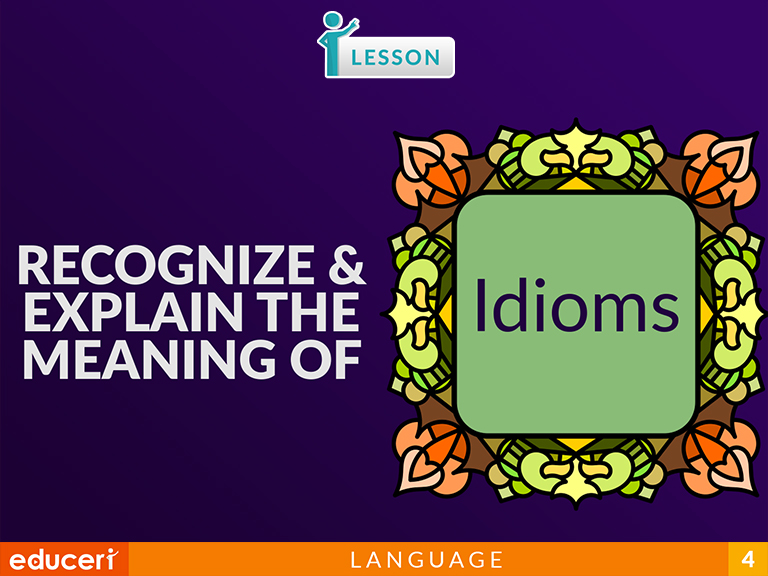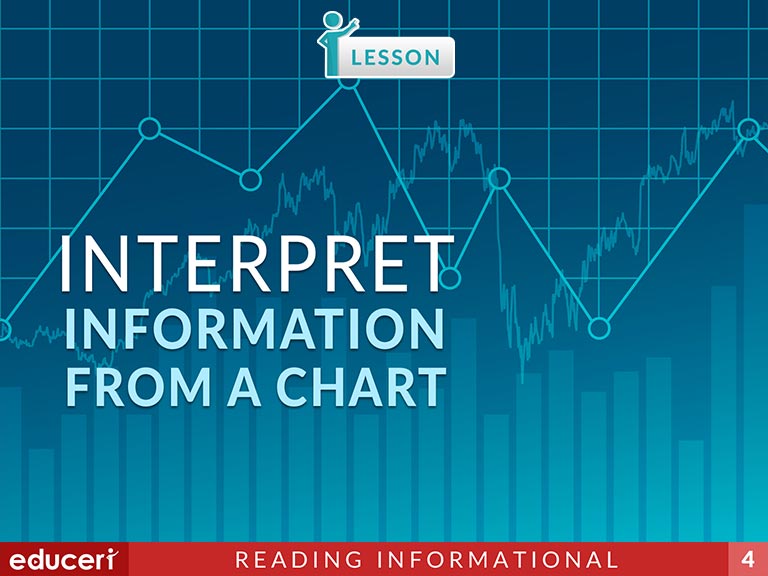All Lessons

Analyze Informational Text
In this Reading Informational Text lesson, students are asked to interpret information from a passage and its related images, diagrams, and maps. Students must identify both the information and where it comes from. The lesson includes research-based strategies and strategic questions that prepare students for assessments.
Share This Lesson

Answer Who, When, and Where Questions
This reading informational text lesson is designed as a part of our Link to Literacy English Language Development program. This description will be updated soon.
Share This Lesson

Recognize Attributes of Opinion Text
This reading informational text lesson has students identify the various attributes of opinion texts. Students will identify the writer's opinions, identify reasons for holding that opinion, and briefly summarize the text.
Share This Lesson

Identify the Author's Point of View
This reading informational text lesson has students identify the author's beliefs about the topic in a text.
Share This Lesson

Describe Problem-and-Solution Text Structure
This Reading Informational lesson has students describe the problem-and-solution text structure.
Share This Lesson

Compare Firsthand and Secondhand Accounts of the Same Event
This reading informational lesson has students compare different accounts of the same event. It includes a description of firsthand and secondhand accounts.
Share This Lesson

Use Technology to Revise Writing
This writing lesson requires students to revise their writing by deleting content that does not fit the topic of the text and adding content where elaboration is needed. The lesson includes research-based strategies and strategic questions that prepare students for assessments. In this lesson, students must select the best sentences to add and delete from multiple choices.
Share This Lesson

Write a Response to Literature
This writing applications lesson focuses on writing responses to literature. The lesson includes research-based strategies and strategic questions that prepare students for assessments. In this lesson, students are provided a prompt and reading passage. Students underline details in the passage that support the prompt then write a response that includes an intro, body, and conclusion. In addition to the lesson, there are three more of the same activity in Independent Practice and review with questions modeled after current adaptive testing items.
Share This Lesson

Create Supporting and Concluding Paragraphs
W.4.2 Write informative/explanatory texts to examine a topic and convey ideas and information clearly.
W.4.2.BW.4.2.B Develop the topic with facts, definitions, concrete details, quotations, or other information and examples related to the topic.
W.4.2.EW.4.2.E Provide a concluding statement or section related to the information or explanation presented.
This writing strategies lesson focuses on creating supporting and concluding paragraphs. The lesson includes research-based strategies and strategic questions that prepare students for assessments. In this lesson, students read an introductory paragraph and identify the main idea. Then, they identify supporting sentences and create a supporting paragraph for each one. Last, students write a concluding paragraph. In addition to the lesson, there are four pages of Independent Practice and review with questions modeled after current adaptive testing items.
Share This Lesson

Plan and Write an Opinion Piece
W.4.1 Write opinion pieces on topics or texts, supporting a point of view with reasons and information.
W.4.1.AW.4.1.A Introduce a topic or text clearly, state an opinion, and create an organizational structure in which related ideas are grouped to support the writer's purpose.
W.4.1.BW.4.1.B Provide reasons that are supported by facts and details.
W.4.1.CW.4.1.C Link opinion and reasons using words and phrases (e.g., for instance, in order to, in addition).
W.4.1.DW.4.1.D Provide a concluding statement or section related to the opinion presented.
This writing lesson covers how to plan an opinion piece. The lesson includes research-based strategies and strategic questions that prepare students for assessments. In this lesson, students read the prompt and decide their position about it. Then they organize their ideas in a planning chart by answering questions about their position and three reasons for it.They also restate their position for a summary, and identify the strongest reason to put first.
Share This Lesson

Plan and Write Informative Text
W.4.2 Write informative/explanatory texts to examine a topic and convey ideas and information clearly.
W.4.2.AW.4.2.A Introduce a topic clearly and group related information in paragraphs and sections; include formatting (e.g., headings), illustrations, and multimedia when useful to aiding comprehension.
W.4.2.BW.4.2.B Develop the topic with facts, definitions, concrete details, quotations, or other information and examples related to the topic.
W.4.2.CW.4.2.C Link ideas within categories of information using words and phrases (e.g., another, for example, also, because).
W.4.2.DW.4.2.D Use precise language and domain-specific vocabulary to inform about or explain the topic.
W.4.2.EW.4.2.E Provide a concluding statement or section related to the information or explanation presented.
This writing lesson covers how to plan informative text. The lesson includes research-based strategies and strategic questions that prepare students for assessments. In this lesson, students read the research and identify related information that is needed to complete a graphic organizer. Then they complete the graphic organizer which asks for a topic, three facts and details, and a conclusion. In addition to the lesson, there are four pages of facts and details related to topics for review and organizing.
Share This Lesson

Edit Text for Run-On Sentences
W.4.5 With guidance and support from peers and adults, develop and strengthen writing as needed by planning, revising, and editing. (Editing for conventions should demonstrate command of Language standards 1-3 up to and including grade 4 here.)
L.4.1.FL.4.1.F Produce complete sentences, recognizing and correcting inappropriate fragments and run-ons.*
Share This Lesson

Punctuate Quotations Correctly
This language lesson teaches students how to punctuate quotations in their writing. The lesson includes research-based strategies and strategic questions that prepare students for assessments. In this lesson, students will learn how to separate signal phrases from direct quotations using commas and quotation marks. They will also learn to capitalize the first word of a direct quotation.
Share This Lesson

Determine the Meaning of Multiple-Meaning Words
L.4.4 Determine or clarify the meaning of unknown and multiple-meaning words and phrases based on grade 4 reading and content, choosing flexibly from a range of strategies.
L.4.4.AL.4.4.A Use context (e.g., definitions, examples, or restatements in text) as a clue to the meaning of a word or phrase.
Share This Lesson

Explain the Meaning of Similes & Metaphors
This language lesson teaches students how to interpret figurative language including similes and metaphors. The lesson includes research-based strategies and strategic questions that prepare students for assessments. In this lesson, students will learn how to identify a simile or metaphor in the context of a paragraph and how to use the context of the text to explain the meaning of the figurative language.
Share This Lesson

Recognize and Explain the Meaning of Idioms
This language lesson teaches students how to recognize and interpret frequently used idioms. This lesson is very impactful for English learners or ELD students. The lesson includes research-based strategies and strategic questions that prepare students for assessments. In this lesson, students look at the literal and figurative meanings of the idioms side-by-side. Then in the activity they use the context of the text to interpret the meaning of idioms.



